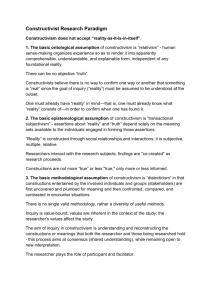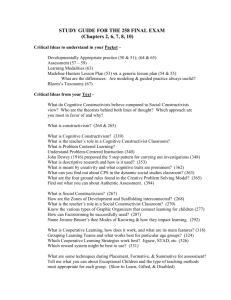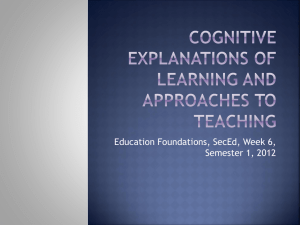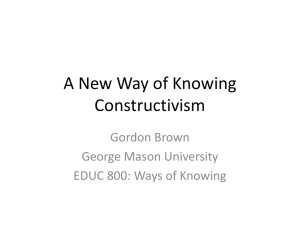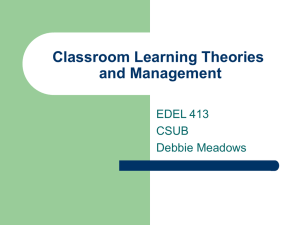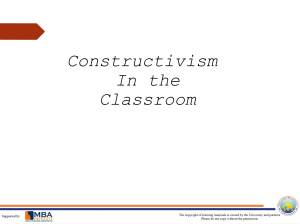game
advertisement
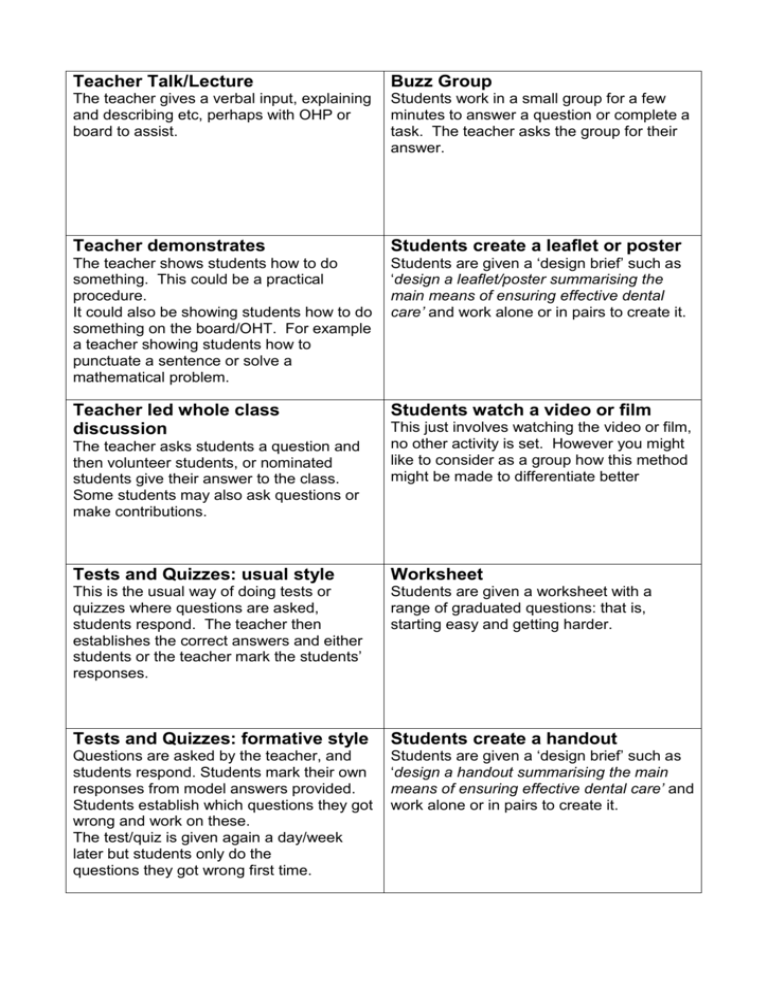
Teacher Talk/Lecture Buzz Group The teacher gives a verbal input, explaining and describing etc, perhaps with OHP or board to assist. Students work in a small group for a few minutes to answer a question or complete a task. The teacher asks the group for their answer. Teacher demonstrates Students create a leaflet or poster The teacher shows students how to do something. This could be a practical procedure. It could also be showing students how to do something on the board/OHT. For example a teacher showing students how to punctuate a sentence or solve a mathematical problem. Students are given a ‘design brief’ such as ‘design a leaflet/poster summarising the main means of ensuring effective dental care’ and work alone or in pairs to create it. Teacher led whole class discussion Students watch a video or film The teacher asks students a question and then volunteer students, or nominated students give their answer to the class. Some students may also ask questions or make contributions. This just involves watching the video or film, no other activity is set. However you might like to consider as a group how this method might be made to differentiate better Tests and Quizzes: usual style Worksheet This is the usual way of doing tests or quizzes where questions are asked, students respond. The teacher then establishes the correct answers and either students or the teacher mark the students’ responses. Students are given a worksheet with a range of graduated questions: that is, starting easy and getting harder. Tests and Quizzes: formative style Students create a handout Questions are asked by the teacher, and students respond. Students mark their own responses from model answers provided. Students establish which questions they got wrong and work on these. The test/quiz is given again a day/week later but students only do the questions they got wrong first time. Students are given a ‘design brief’ such as ‘design a handout summarising the main means of ensuring effective dental care’ and work alone or in pairs to create it. Experiment/practical ‘recipe style’ Students are given a task to do along with the materials needed, and are also given a detailed description of how to do the task. Pair Checking Students check each other’s work. For example check each other’s calculations, punctuation etc after this work has been done individually. Case Studies Experiment/practical ‘discovery style’ Students are given a task to do but not told how to do it. Students plan a method, then check this with the teacher before starting. Students who cannot work out how to do it are given a ‘recipe’ style help sheet or helped in some other way. Paired Student Practice Students work in pairs on a written task to complete, which requires them to practise a skill demonstrated by the teacher. For example doing calculations, punctuating a sentence etc. Explaining Tasks Students are given a case study with graded questions. E.g. Business Studies students, after studying marketing, are given the marketing strategy of a small hotel and are asked questions about it. Both reproduction and reasoning questions are included. Maths/science: Students study worked examples and then explain the ‘how’ and the ‘why’ of the method to each other. Other subjects: students explain the key points of a lesson to each other at the end of that lesson. In both cases the teacher then gives model explanations Research: test style Research: assignment style Students are given a topic to research using books, internet, CDRom etc. Students may be given references or asked to find the material for themselves. Students’ understanding is then checked with a short test Students are given a topic to research using books, internet, CDRom etc. Students may be given references or asked to find the material for themselves. Students’ then write an account of what they have discovered and hand this in for marking Student Presentation Reading Students are given a topic to explain to the class. They may work alone or in a small group to prepare, plan and deliver the presentation. Materials and plans are checked by the teacher before the presentation. Students read appropriate texts. Choose whether the texts are given Activity. Create a set of cards for teachers to use in groups of two to four using the above as masters. Ask the teachers to decide on the best and the worst methods from the point of view of effective learning, If you have discussed constructivism with them, they can choose the best three methods from the point of view of constructivism, and the worst three. Constructivism is explained in Teaching Today Geoff Petty Third Edition Nelson Thornes What is constructivism? students make their own meaning, they don’t just remember the learner encodes meaning in constructs new learning is built out of old What does it tell us about how to teach? use methods that require constructs to be made set tasks that require reasoning not just reproduction (high order tasks) check the constructs! And get students to check them too e.g. use peer explaining!


